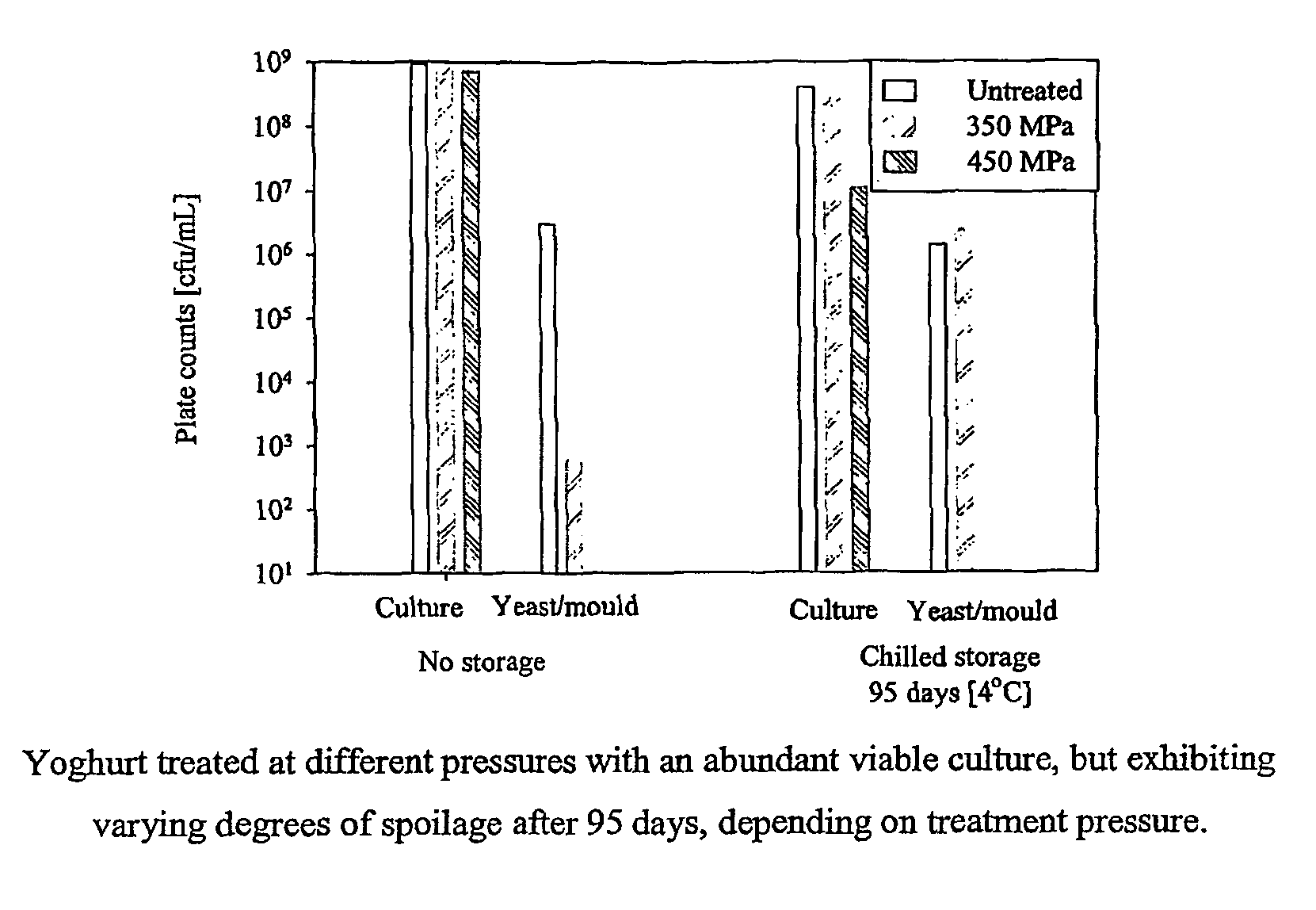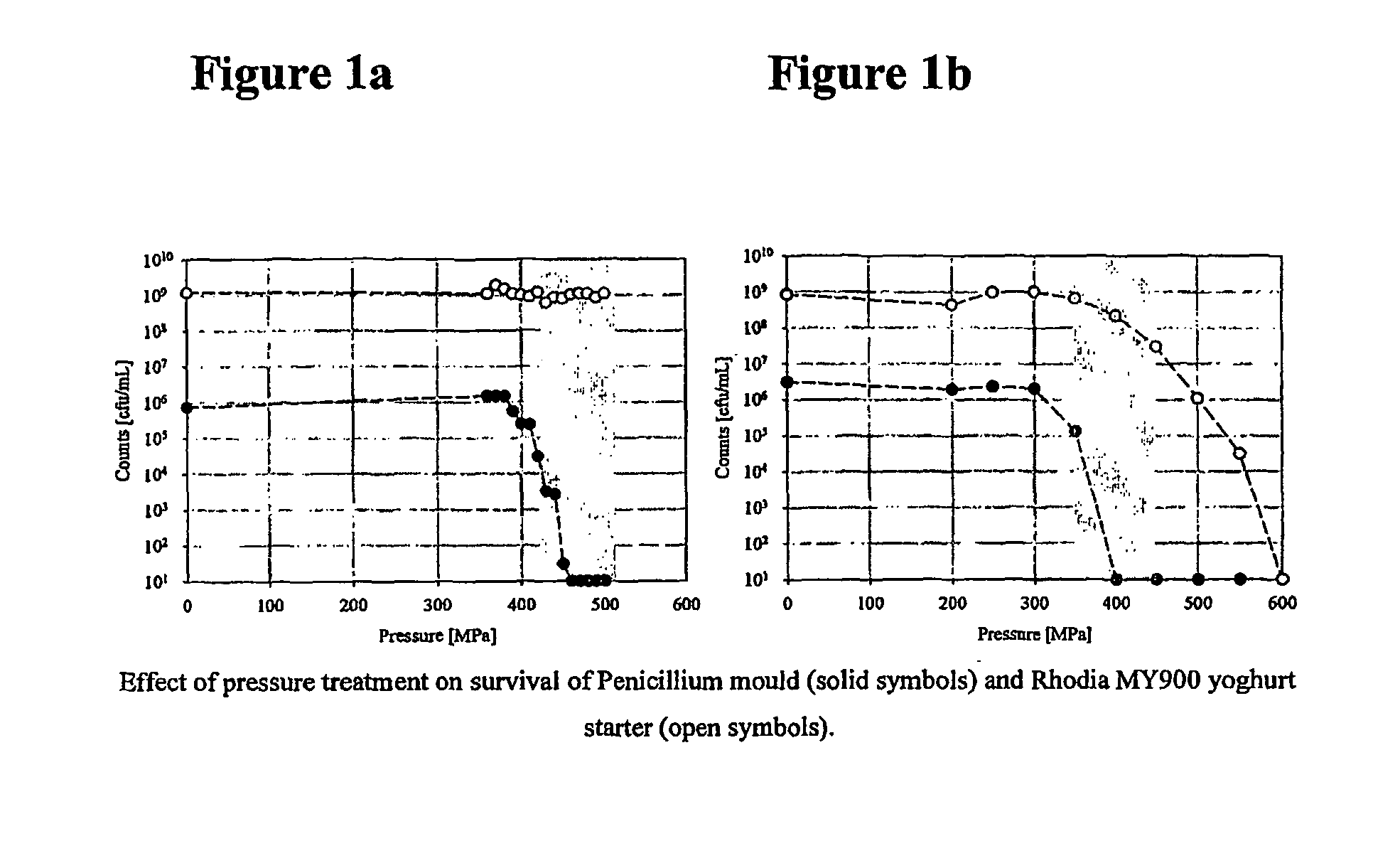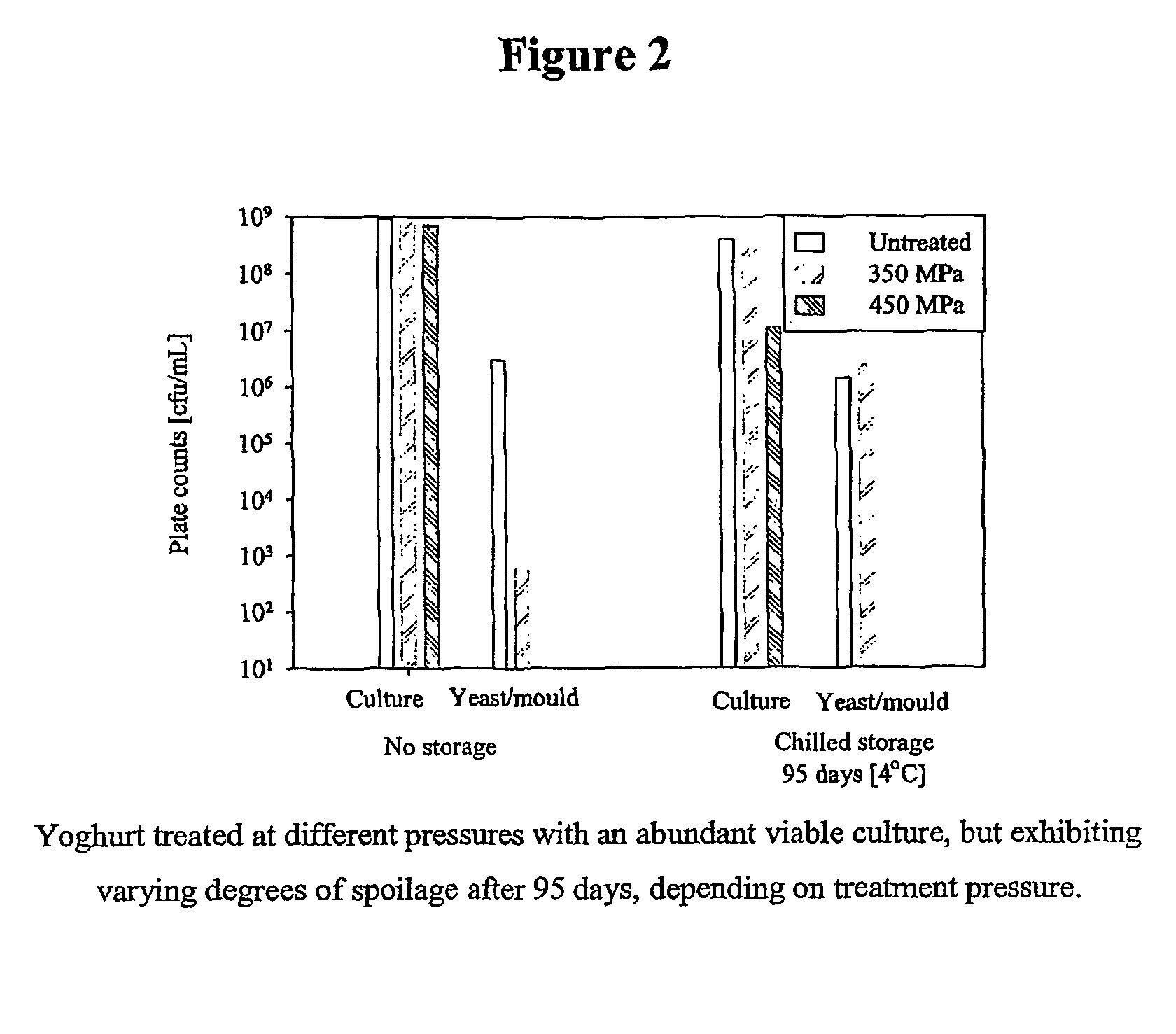Pressure treating food to reduce spoilage
a technology of food and pressure treatment, applied in the field of pressure treating food, can solve the problems of food being spoilt, food being inedible, and many foods have relatively short shelf life, and achieve the effect of preventing or eliminating the growth of spoilage microflora
- Summary
- Abstract
- Description
- Claims
- Application Information
AI Technical Summary
Benefits of technology
Problems solved by technology
Method used
Image
Examples
example 1
A Cultured Dairy Product Containing a Viable Culture
[0089]A 10% reconstituted skim milk (RSM) substrate was inoculated with 1% of a culture of Streptococcus thermophilus St-10 (FRCCC) and fermented overnight at 37° C. The pH of the cultured skim milk was adjusted to 4.4 by addition of lactic acid, and intentionally contaminated by spiking at 1.8×106 cfu / g (Table 5) with a Yarrowia lipolytica yeast (Table 6). The contaminated cultured milk so produced was then treated by applying a pressure of 400 MPa for 5 minutes at 10° C. This process produced a product with no detectable contaminating yeast (>5-log inactivation), while retaining a starter culture count of 3.3×107 cfu / g (M17 agar, Table 5).
example 2
A Cultured Dairy Product Containing a Viable Culture
[0090]A 10% RSM substrate was inoculated with 1% of a culture of Lactobacillus helveticus Lh-5001 (FRCCC) and fermented overnight at 37-C. The pH of the cultured skim milk was adjusted to 4.4 and intentionally contaminated by spiking to 3.1×106 cfu / g (Table 5) with a Penicillium mould (Table 6). The contaminated cultured milk so produced was then treated by applying a pressure of 400 MPa for 5 minutes at 10° C. This process produced a product with no detectable contaminating mould, while retaining a starter culture count of 1.3×108 cfu / g (MRS agar, Table 5).
example 3
A Cultured Dairy Product Containing a Viable Culture
[0091]A 10% RSM substrate was inoculated with 1% of a culture of Lb. delbruekii sub-species bulgaficus Lb-1 (FRCCC) and fermented overnight at 37° C. The pH of the cultured skim milk was adjusted to 4.4, and intentionally contaminated by spiking at 9.3×107 cfu / g (Table 5) with a Debromyces hanseii yeast (Table 6). The contaminated cultured milk so produced was then treated by applying a pressure of 350 MPa for 5 minutes at 10° C. This process produced a product with no detectable contaminating yeast, while retaining a starter culture count of 7.6×107 cfu / g (MRS agar, Table 5).
PUM
 Login to View More
Login to View More Abstract
Description
Claims
Application Information
 Login to View More
Login to View More - R&D
- Intellectual Property
- Life Sciences
- Materials
- Tech Scout
- Unparalleled Data Quality
- Higher Quality Content
- 60% Fewer Hallucinations
Browse by: Latest US Patents, China's latest patents, Technical Efficacy Thesaurus, Application Domain, Technology Topic, Popular Technical Reports.
© 2025 PatSnap. All rights reserved.Legal|Privacy policy|Modern Slavery Act Transparency Statement|Sitemap|About US| Contact US: help@patsnap.com



